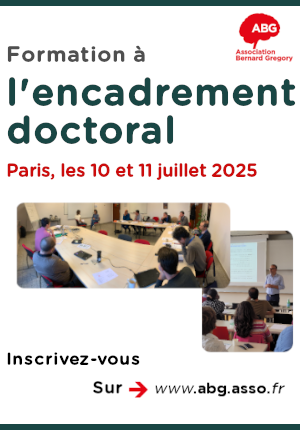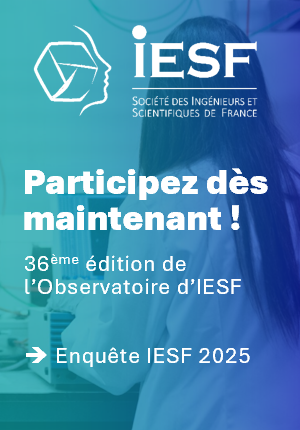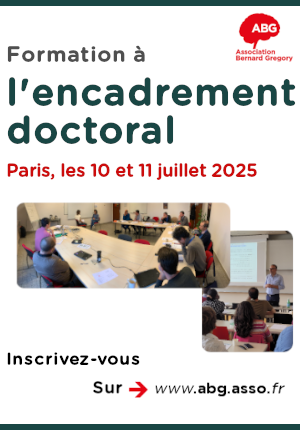Mécanismes de coexistence entre lichens saxicoles // Mechanisms of coexistence between saxicolous lichens
|
ABG-131137
ADUM-65188 |
Sujet de Thèse | |
| 17/04/2025 | Contrat doctoral |
Université de Savoie Mont-Blanc
GRENOBLE CEDEX 9 - France
Mécanismes de coexistence entre lichens saxicoles // Mechanisms of coexistence between saxicolous lichens
- Ecologie, environnement
Ecologies des communautés, Ecologie théorique, Compétition pour l'espace, Modélisation, Biodiversité
Community ecology, Theoretical ecology, Competition for space, Modelling, Biodiversity
Community ecology, Theoretical ecology, Competition for space, Modelling, Biodiversity
Description du sujet
Un enjeu important en écologie des communautés est de comprendre comment de nombreuses espèces en compétition pour des ressources communes peuvent coexister. Il est pour cela très utile de combiner les approches théoriques et empiriques, mais dans la plupart des systèmes naturels de trop nombreux processus sont à prendre en compte, ce qui rend difficile la paramétrisation des modèles à partir des données empiriques. Les communautés d'organismes sessiles se prêtent plus facilement à l'analyse ; c'est notamment le cas des lichens saxicoles qui interagissent surtout entre eux au niveau de leur zone de contact. A partir de photographies prises sur des surfaces rocheuses couvertes par différentes espèces de lichens, chaque individu sera cartographié par SIG. En analysant la forme des zones de contact, il sera possible d'estimer le sens et la force de l'interaction entre chaque paire d'espèce. Ces informations pourront alors être injectées dans des modèles de champ moyen (système d'équations différentielles ordinaires) et des modèles spatialement explicites (systèmes d'équations aux dérivées partielles et automates cellulaires) pour tester s'ils peuvent reproduire la dynamique de la communauté. Cette analyse révélera les mécanismes permettant la coexistence entre espèces, en formulant l'hypothèse que la compétition intransitive entre lichens est l'un des facteurs clé. L'analyse de surfaces rocheuses d'âge différent permettra ensuite de calibrer leur dynamique temporelle. Enfin, la comparaison de surfaces d'inclinaisons et expositions variables permettra de comprendre comment la dynamique des communautés varie le long de gradients environnementaux.
------------------------------------------------------------------------------------------------------------------------------------------------------------------------
------------------------------------------------------------------------------------------------------------------------------------------------------------------------
Understanding how competing species can coexist is a major issue in community ecology. Useful insights can be provided by the articulation of empirical and theoretical approaches, but in many natural systems too many processes come into play, which hampers the parametrization of models from empirical data. Communities of sessile organisms are easier to study, in particular saxicolous lichens which mainly interact when coming into contact. Using visible images taken on natural communities of rock surfaces covered by different species of lichens, each individual will be mapped on a GIS. The analysis of the shapes of the contact zone between individuals will lead to the estimation of the interaction coefficient between each species pair. This information will then be fed to mean field models (ordinary differential equations) and to spatially explicit models (partial differential equations and cellular automata), in order to test if they can reproduce the community dynamics. This analysis will reveal the mechanisms leading to species coexistence, under the assumption that intransitive competition among lichens is a major factor. The analysis of rocky surfaces of various ages will then allow to calibrate the temporal dynamics of the system. Finally, the comparison of surfaces having contrasting inclinations and solar exposure will allow to understand how do environmental gradients affect species coexistence.
------------------------------------------------------------------------------------------------------------------------------------------------------------------------
------------------------------------------------------------------------------------------------------------------------------------------------------------------------
Début de la thèse : 01/10/2025
------------------------------------------------------------------------------------------------------------------------------------------------------------------------
------------------------------------------------------------------------------------------------------------------------------------------------------------------------
Understanding how competing species can coexist is a major issue in community ecology. Useful insights can be provided by the articulation of empirical and theoretical approaches, but in many natural systems too many processes come into play, which hampers the parametrization of models from empirical data. Communities of sessile organisms are easier to study, in particular saxicolous lichens which mainly interact when coming into contact. Using visible images taken on natural communities of rock surfaces covered by different species of lichens, each individual will be mapped on a GIS. The analysis of the shapes of the contact zone between individuals will lead to the estimation of the interaction coefficient between each species pair. This information will then be fed to mean field models (ordinary differential equations) and to spatially explicit models (partial differential equations and cellular automata), in order to test if they can reproduce the community dynamics. This analysis will reveal the mechanisms leading to species coexistence, under the assumption that intransitive competition among lichens is a major factor. The analysis of rocky surfaces of various ages will then allow to calibrate the temporal dynamics of the system. Finally, the comparison of surfaces having contrasting inclinations and solar exposure will allow to understand how do environmental gradients affect species coexistence.
------------------------------------------------------------------------------------------------------------------------------------------------------------------------
------------------------------------------------------------------------------------------------------------------------------------------------------------------------
Début de la thèse : 01/10/2025
Nature du financement
Contrat doctoral
Précisions sur le financement
Concours pour un contrat doctoral
Présentation établissement et labo d'accueil
Université de Savoie Mont-Blanc
Etablissement délivrant le doctorat
Université de Savoie Mont-Blanc
Ecole doctorale
634 Sciences Ingénierie Environnement
Profil du candidat
La ou le candidat.e aura une formation en écologie, notamment en écologie des communautés et écologie théorique. Une solide expérience en SIG (Photogrammétrie, segmentation et classifications d'images) et en analyse de données (logiciel R) est nécessaire. Des profils atypiques (maths appliqués, géographie) seront aussi considérés. Des compétences naturalistes seront appréciées.
The candidate should have a background in ecology, particularly in community ecology and theoretical ecology. Solid experience in GIS (photogrammetry, image segmentation and classification) and data analysis (R software) is required. Non-traditional profiles (e.g., applied mathematics, geography) will also be considered. Field-based ecological knowledge and naturalist skills will be appreciated.
The candidate should have a background in ecology, particularly in community ecology and theoretical ecology. Solid experience in GIS (photogrammetry, image segmentation and classification) and data analysis (R software) is required. Non-traditional profiles (e.g., applied mathematics, geography) will also be considered. Field-based ecological knowledge and naturalist skills will be appreciated.
31/05/2025
Postuler
Fermer
Vous avez déjà un compte ?
Nouvel utilisateur ?
Besoin d'informations sur l'ABG ?
Vous souhaitez recevoir nos infolettres ?
Découvrez nos adhérents
 SUEZ
SUEZ  Nokia Bell Labs France
Nokia Bell Labs France  Laboratoire National de Métrologie et d'Essais - LNE
Laboratoire National de Métrologie et d'Essais - LNE  Institut Sup'biotech de Paris
Institut Sup'biotech de Paris  ANRT
ANRT  Ifremer
Ifremer  MabDesign
MabDesign  ADEME
ADEME  TotalEnergies
TotalEnergies  CASDEN
CASDEN  ASNR - Autorité de sûreté nucléaire et de radioprotection - Siège
ASNR - Autorité de sûreté nucléaire et de radioprotection - Siège  ONERA - The French Aerospace Lab
ONERA - The French Aerospace Lab  PhDOOC
PhDOOC  Aérocentre, Pôle d'excellence régional
Aérocentre, Pôle d'excellence régional  Tecknowmetrix
Tecknowmetrix  Groupe AFNOR - Association française de normalisation
Groupe AFNOR - Association française de normalisation  MabDesign
MabDesign  CESI
CESI  Généthon
Généthon





